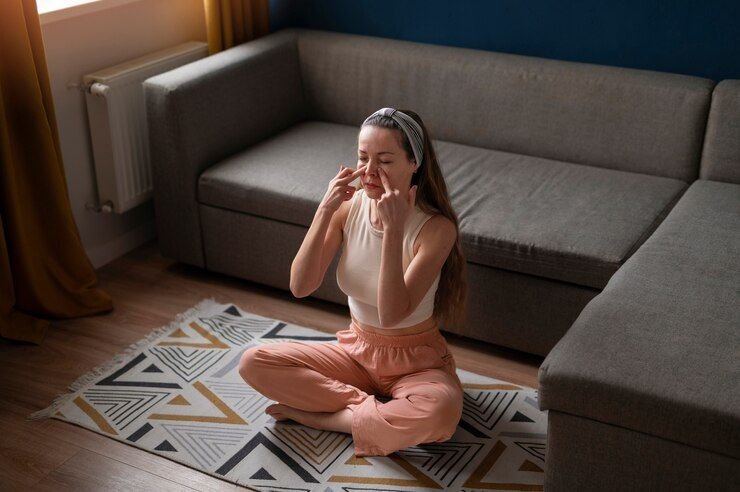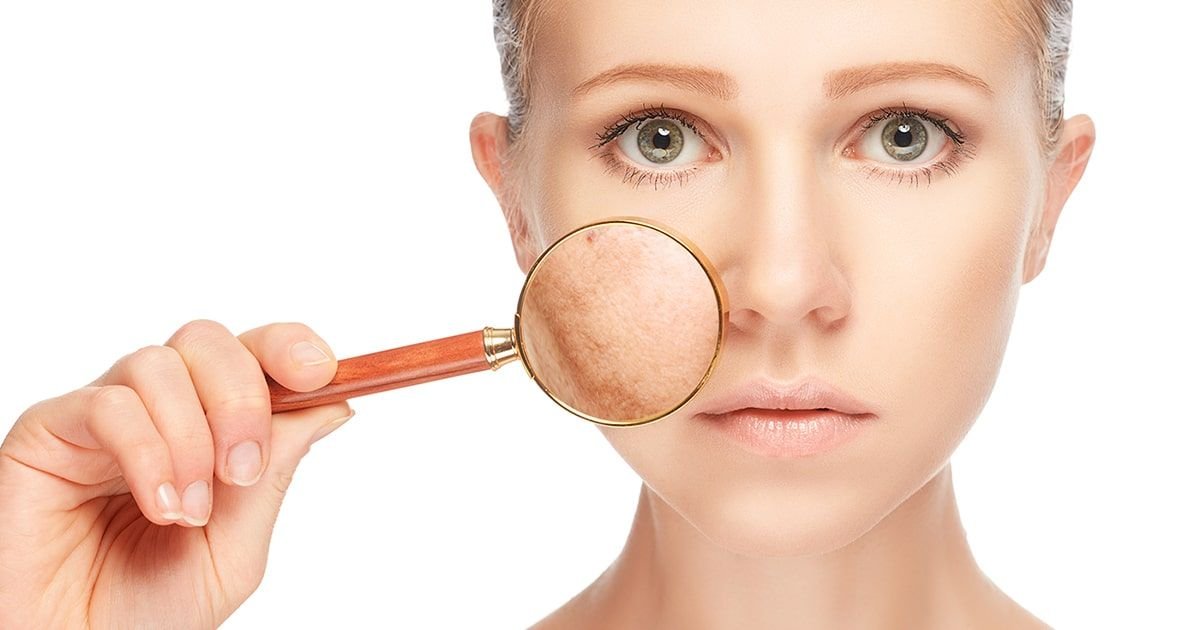Your cart is currently empty!

How Can I Identify My Skin Type at Home?

Table of Contents
Identifying your skin types at home is an essential step in creating an effective skincare routine tailored to your specific needs. By understanding your skin types, you can select the right products and treatments to address any concerns and maintain optimal skin health. While professional assessments by dermatologists provide the most accurate diagnosis, there are several methods you can use to identify your skin types at home. Let’s explore these methods with Piuny Cosmetics.
How To Understand your skin Types
Understanding your skin types involves observing its characteristics and behaviors to determine whether it is oily, dry, normal, sensitive, or combination skin types. Start by examining how your skin feels and looks throughout the day. Oily skin tends to appear shiny and may have enlarged pores, while dry skin feels tight and may show flakiness. Normal skin types generally has a balanced texture and moisture level, while sensitive skin may react with redness or irritation to certain products or environmental factors.
Combination skin exhibits characteristics of multiple types, with oily areas in the T-zone and drier patches elsewhere. Additionally, consider how your skin responds to various skincare products and environmental factors, such as climate changes or exposure to pollutants. By paying attention to these factors, you can gain insights into your skin’s types needs and preferences, allowing you to select appropriate skincare products and routines to maintain its health and balance.
Visual Examination:
- One of the simplest ways to identify your skin types is through visual examination. Stand in front of a well-lit mirror and observe your skin closely. Pay attention to the following characteristics:
Shine and Texture: Oily skin tends to have a shiny or greasy appearance, especially in the T-zone (forehead, nose, and chin). Look for areas where your skin appears slick or reflective.
Pore Size: Oily skin often has visibly enlarged pores, particularly in the T-zone. Check if your pores appear larger or more prominent, especially on your nose and cheeks.
Dryness and Flakiness: Dry skin types may feel tight, especially after cleansing, and may appear flaky or rough. Look for areas where your skin feels dry, tight, or shows signs of flakiness, such as around the mouth or cheeks.
Redness and Sensitivity: Sensitive skin types may exhibit redness, irritation, or inflammation, especially in response to skincare products or environmental factors. Check if your skin appears red or flushed, particularly after exposure to potential irritants.
Overall Texture: Normal skin types typically has a smooth and even texture, with balanced moisture levels. Assess whether your skin feels smooth and uniform or if it shows signs of uneven texture, roughness, or congestion.
- By visually examining your skin and noting any specific characteristics, you can start to identify patterns that indicate your skin types.
Blotting Paper Test
The blotting paper test is a quick and easy method to assess oiliness and determine if you have oily or combination skin. Follow these steps:
- 1. Start by washing your face with a gentle cleanser and patting it dry with a clean towel.
- 2. Wait for about an hour to allow your skin’s natural oils to accumulate.
- Take a piece of blotting paper or tissue paper and gently press it against different areas of your face, focusing on the forehead, nose, cheeks, and chin (T-zone).
- 3. Hold the blotting paper up to the light and observe the amount of oil absorbed.

Oily Skin: If the blotting paper appears saturated with oil and there are visible grease spots, especially in the T-zone, you likely have oily skin.
Combination Skin: If the blotting paper shows oiliness primarily in the T-zone but less so on the cheeks, you may have combination skin.
Dry Skin: If the blotting paper shows minimal to no oiliness, and your skin feels tight or dry, you likely have dry skin.
- The blotting paper test provides a clear indication of your skin’s oil production levels and can help you determine the most appropriate skincare products to use.
Skin Sensitivity Test
Assessing your skin’s sensitivity involves observing how it reacts to certain stimuli and potential irritants. Here’s how you can conduct a sensitivity test:
- 1. Choose a small, discreet area of your skin, such as the inner forearm or behind the ear.
- 2. Apply a small amount of a new skincare product or ingredient to the selected area.
- 3. Wait 24 to 48 hours and observe for any adverse reactions, such as redness, itching, burning, or stinging sensations.
Sensitive Skin: If your skin exhibits any signs of irritation or reacts negatively to the product, you likely have sensitive skin.
Non-Sensitive Skin: If your skin shows no adverse reactions and remains calm and comfortable, it may be less sensitive.
- Performing sensitivity tests with different skincare products can help you identify specific ingredients or formulations that may trigger reactions and guide your product selection accordingly.
Skin Texture and Moisture Test
Assessing your skin’s texture and moisture levels can provide insights into whether you have dry, normal, or oily skin. Here’s how to conduct this test:
- 1. After cleansing your face, wait for about 30 minutes to allow your skin to return to its natural state.
- 2. Lightly touch different areas of your face with clean fingertips to assess texture and moisture levels.
Dry Skin: If your skin feels tight, rough, or appears flaky, you likely have dry skin with insufficient moisture levels.

Normal Skin: If your skin feels smooth, supple, and well-hydrated without any noticeable dryness or oiliness, you likely have normal skin.
Oily Skin: If your skin feels slick or greasy to the touch, especially in the T-zone, and exhibits visible shine, you likely have oily skin with excess sebum production.
- By assessing your skin’s texture and moisture levels, you can determine its hydration needs and select appropriate skincare products to maintain a healthy balance.
Observing Skin Reactions to Climate and Environment
- Pay attention to how your skin reacts to changes in climate, weather conditions, and environmental factors. For example:
Dry Climate: If your skin feels drier or tighter than usual in arid or low-humidity environments, it may indicate dry skin.
Hot and Humid Climate: If your skin becomes oilier or more prone to breakouts in hot and humid weather, it may indicate oily or combination skin.
Environmental Triggers: Notice how your skin reacts to exposure to environmental pollutants, UV radiation, wind, or indoor heating and cooling systems. Sensitivity to these factors may suggest sensitive skin.
- By observing your skin’s responses to different environmental conditions, you can gain insights into its inherent characteristics and adjust your skincare routine accordingly to provide adequate protection and support.

conclusion
Identifying your skin types at home involves a combination of visual examination, simple tests, and observation of how your skin responds to various factors. By paying attention to specific characteristics such as oiliness, dryness, sensitivity, and texture, you can gain valuable insights into your skin’s needs and preferences. Keep in mind that your skin types change over time due to factors such as age, hormonal fluctuations, lifestyle habits, and seasonal variations.
Regularly reassessing your skin and adjusting your skincare routine accordingly can help you maintain healthy, balanced skin and address any concerns effectively. If you’re uncertain about your skin types or have persistent skin issues, consider consulting a dermatologist for professional evaluation and guidance tailored to your individual needs. Piuny Cosmetics helps you for identify your skin and Piuny Cosmetics Provided you the best skin care product for your skin.




Leave a Reply